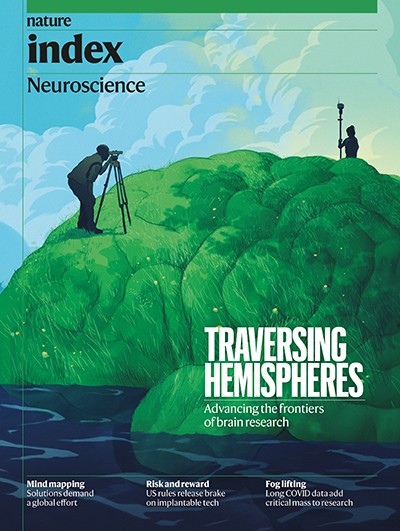Neuroscience has undergone remarkable progress. Researchers can now study specific areas of the brain with unprecedented detail thanks to cutting-edge imaging and genetic tools. Advanced modelling techniques, driven by artificial intelligence, have facilitated whole-brain mapping to track cognitive development over a lifetime. But fundamental questions about how the brain’s core functions emerge from cellular and molecular processes remain unanswered, limiting treatment options for neurological conditions.
Nature Index 2024 Neuroscience
Countries are pooling their resources and expertise to up the ante. Large-scale neuroscience projects are making use of unique strengths, including China’s vast population data and the United States’ med-tech industry. But researchers are calling for more funding, pointing out that budgets in other areas, such as the European particle-physics laboratory, CERN, and NASA’s James Webb Space Telescope, dwarf those of the biggest neuroscience initiatives.
Raising more money is not the only challenge. Over the past decade, tens of billions have been spent on finding effective treatments for Alzheimer’s disease, with limited patient benefit. A greater understanding of how brain conditions relate to other organs and biological systems, and vice versa, is needed. Studies investigating long COVID, for instance, could have major implications for autoimmune diseases.
In the coming years, technological advances such as implantable brain–computer interfaces (BCIs) are expected to fundamentally change how neuroscience is researched, and how neurological disorders are treated and diagnosed. The United States, the leading country in Nature Index neuroscience output by some margin, is setting the pace for BCI regulation, and other nations will need to find their footing fast.


